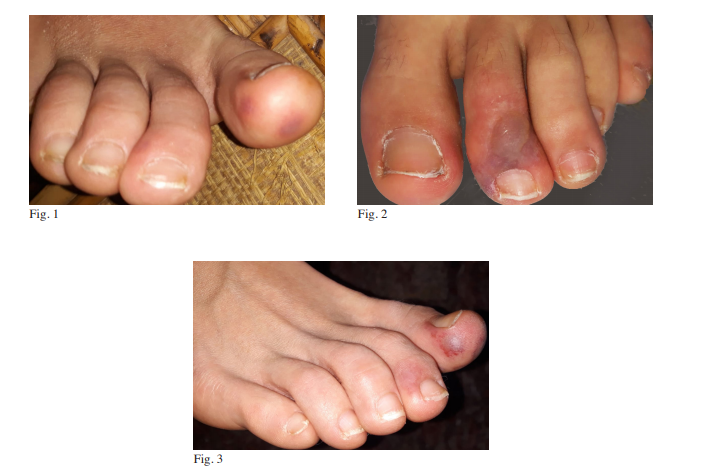
Purple chickenpox or chilblain-like marks on toes is the newest symptom of coronavirus disease 2019 (COVID-19). It is caused by the inflammation of tiny blood cells, which is prevalent in children and teenagers.
The toe marks are present in patients of all ages, especially children and adolescents. These also appear on adults, but they heal without leaving scars, according to the Spanish General Council of Official Podiatrist Colleges.
Since then, the condition was seen in other European countries, such as Italy and France, it added. A 13-year-old boy in Bari, Southern Italy - thought to be bitten by a spider - was one of the first patients reported to have such marks.
Daily Mail reported that these skin bruises and lesions could be seen in one out of five patients in an Italian hospital. Spanish medical experts are now collecting a database of people who have the virus and the condition.
Parents are advised to quarantine their children if they have bruises or lesions on their feet and remain calm, said the General Council of Official Colleges of Podiatrists. The college added there isn't enough scientific evidence linking these marks to COVID-19.
But Dr. Daniel Gordon from the National Health Service said the condition "would be far from surprising if it turned out to be true that COVID-19 causes symptoms in the skin."
Just one of many coronavirus symptoms
The common symptoms for patients with COVID-19 are cough and fever. But atypical symptoms also exist, such as diarrhea, testicular pain, and loss of taste and smell.
Some people in the UK have been feeling a "fizzing" sensation in their testicles. For a 42-year-old man, he felt a stabbing pain after going to the hospital, said the researchers from Harvard Medical School.
He underwent a CT scan - his testicles showed no irregularities, but his lungs revealed some damage. He tested positive for COVID-19 two days after the scan.
Read ALSO: The Use of Air Con Could Further Spread the Coronavirus: 10 Cases Suggest
The National Health Service discovered a new symptom - the main symptom of a 40-year-old woman, a sudden and complete loss of smell called anosmia.
According to the Journal of the American Medical Association, anosmia causes swelling in the woman's olfactory cleft or the narrow space at the back of her nose. Anosmia prevents the food's odor from reaching her olfactory epithelium, the nasal tissue involved in her sense of smell.
From March 24 to March 29, King's College London's app for self-reported symptoms revealed 60 percent of its 1.5 million users lost their sense of smell.
In China, some patients even have severe headaches and dizziness. The study Neurologic Manifestations of Hospitalized Patients With Coronavirus Disease 2019 in Wuhan, China, revealed dizziness and headache were the most reported symptoms.
According to the study's authors, Ling Mao, Huijuan Jin, and Mengdie Wang, 36 patients or 16.8% of 214 had dizziness, while 28 patients or 13.1% of all case studies reported headaches.
An increasing number of recoveries
Statista notes, "485,362 people had recovered from the disease, while there had been 126,830 deaths. The United States, Italy, and Spain have been the three countries hardest hit by the pandemic."
Read ALSO: Herd Immunity Vs Coronavirus: How Does it Work and the Role of Vaccines in Ending the Pandemic
While COVID-19 does not have a dedicated treatment yet, it is important to keep track of all these symptoms. To come up with a cure, some organizations are looking to develop drugs to combat the pandemic, while others are looking to repurpose older medicine.
The Centers for Disease Control (CDC) has a care kit with a Symptom and Temperature Log, where they can record their symptoms and temperature from Day 0 to Day 14. Download the CDC care kit here.
The kit also has the phone numbers for state and local health departments for easier reference.











